In the wake of North Korea's claim that it had successfully test-fired an intercontinental ballistic missile (ICBM), threats of a potential nuclear war have reached a new level.
The latest missile launch comes at a time when tensions between Washington and Pyongyang have soared in recent months, with the US government warning the North Korean regime of an "effective and overwhelming" response if the later uses nuclear weapons.
Following North Korea's announcement of the missile launch on Tuesday, the Trump administration confirmed the isolated nation's claim, saying that the U.S. would use "the full range of capabilities at our disposal against the growing threat." The warning was later followed by a joint military exercise on Wednesday morning, with American and South Korean troops firing ballistic missiles in the waters along the east coast of the Korean Peninsula.
North Korea, however, made its intentions clear on Wednesday when it said that it would continue efforts to bolster its nuclear and missile capabilities as long as the nuclear threat from the US persisted.
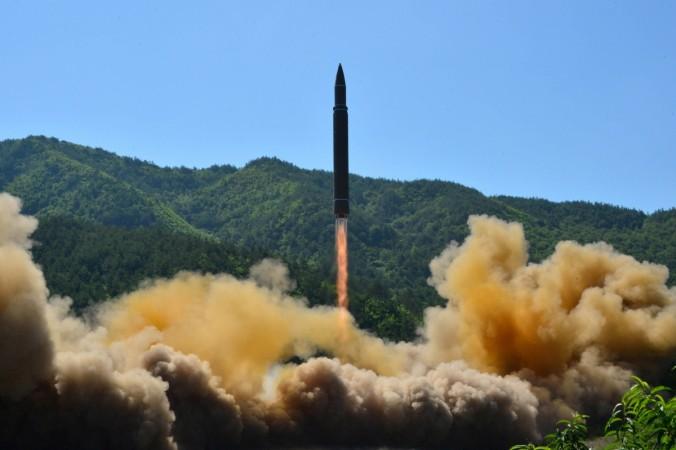
In December 2016, Russian President Vladimir Putin said that reinforcement of the country's nuclear capability should be one of the main objectives for 2017. US President Donald Trump, who was yet to take office at that time, responded by saying his country must also "greatly strengthen and expand its nuclear capability."
Are we witnessing a return of the expansion of nuclear weapons across the world? World events over the last few months suggest we are. While there are disagreements among experts over the number of deliverable nuclear weapons by North Korea, more is known about such arsenals in other parts of the world.
Nations armed with nuclear weapons
According to Arms Control Association, the world's nine nuclear-armed states collectively possess nearly 15,000 nuclear warheads, out of which around 10,000 are currently in military service. The majority of the total warheads belong to U.S. and Russia.
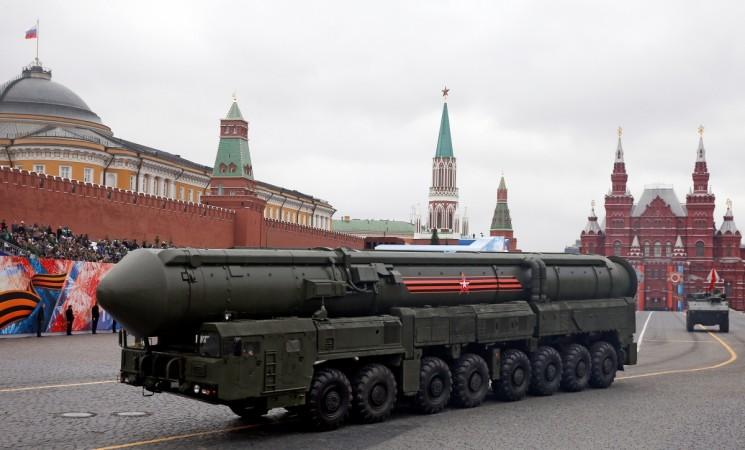
The 1968 Treaty on the Non-Proliferation of Nuclear Weapons recognises five countries, including China, France, Russia, United Kingdom, and the U.S., with the possession of nuclear weapons. Although the treaty legitimises the countries' nuclear arsenals, it requires them not to build and maintain such weapons forever.
The other four countries that also have nuclear weapons are India, Israel, Pakistan and North Korea, who didn't sign the treaty, but are estimated to possess a total of 340 warheads.
Here's the breakup for the world's nearly 15,000 nukes:
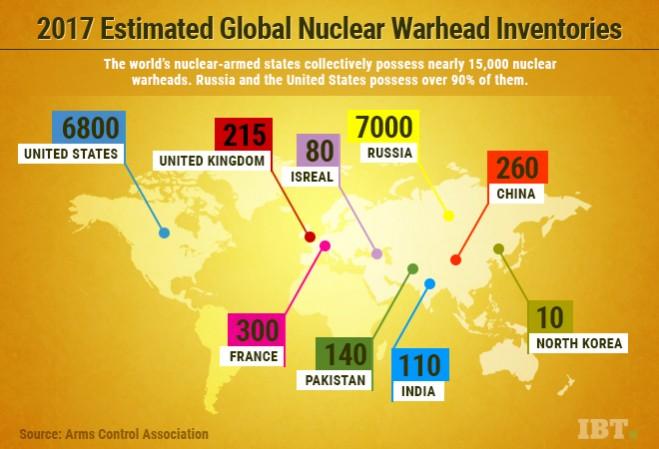
According to the April 2017 New START (Strategic Arms Reduction Treaty) declaration, as of March 1, 2017, Russia deployed 1,765 strategic warheads on 523 ICBMs, submarine-launched ballistic missiles (SLBMs) and strategic bombers. The U.S., on the other hand, deployed 1,411 strategic nuclear warheads on 673 ICBMs, SLBMs and strategic bombers.
In January, US Vice President Joe Biden announced that as of September 30, 2016, the U.S. possessed 4,018 active and inactive nuclear warheads while approximately 2,800 warheads were in the line to be destroyed.
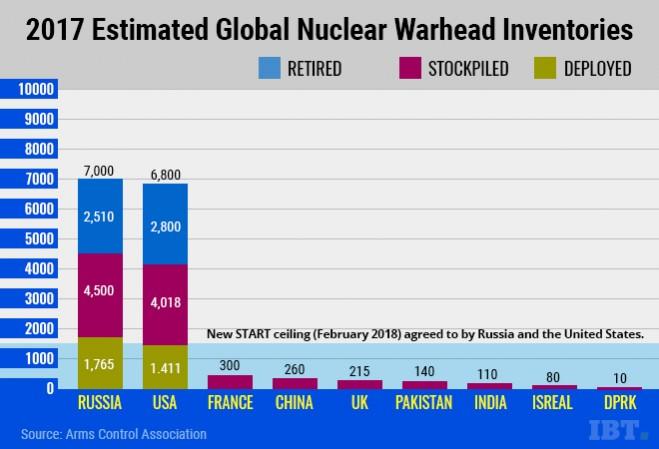
Countries hosting U.S. nuclear weapons
Apart from these nine countries, five European nations also host US nuclear weapons as part of a NATO nuclear-sharing arrangement.
While nearly two dozen other nations apparently rely on US nuclear weapons for national security, many other nations also have nuclear power or research reactors that can be used for nuclear weapons production, according to International Campaign to abolish Nuclear Weapons (icanw).
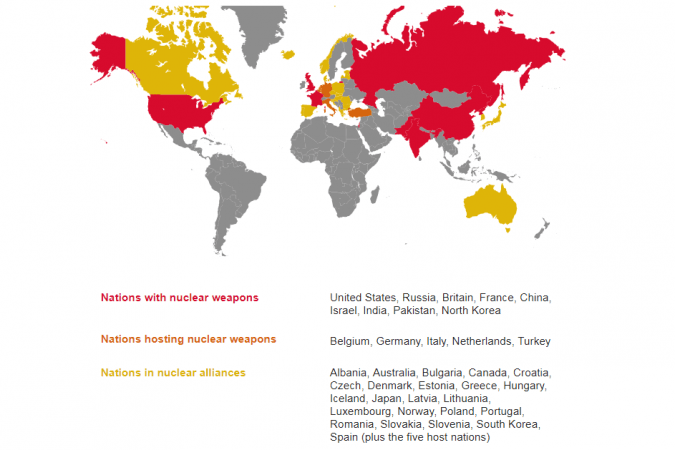
How destructive could these nuclear weapons be?
Nuclear weapons are considered to be the most dangerous weapons on earth while detonating only one can destroy a whole city, potentially killing millions of people and leaving long-term catastrophic effects on the environment.
According to Indian Scientists Against Nuclear Weapons (ISANW), the temperature generated in the immediate area of a nuclear detonation compares with the temperature inside the core of the Sun. At these temperatures, everything near ground-zero vaporises.

According to the NukeMap website, if the "B-83" -- the largest bomb in the current U.S. arsenal -- is dropped on Moscow, it would kill more than 1.3 million people and injure over 3.7 million in the first 24 hours of detonation.
Similarly, dropping of the "Tsar Bomba" -- the largest USSR bomb tested – on New York could kill 7.6 million people and injure nearly 4.2 million in the first 24 hours.
There has been some progress in reducing Cold War nuclear arsenals, but the pace of reduction has slowed significantly over the years.
While the world's inventory of nuclear warheads still remains at a very high level, the failure of nuclear-armed states to dismantle their stockpile has increased the risk of other countries acquiring nuclear weapons for the indefinite future.

















